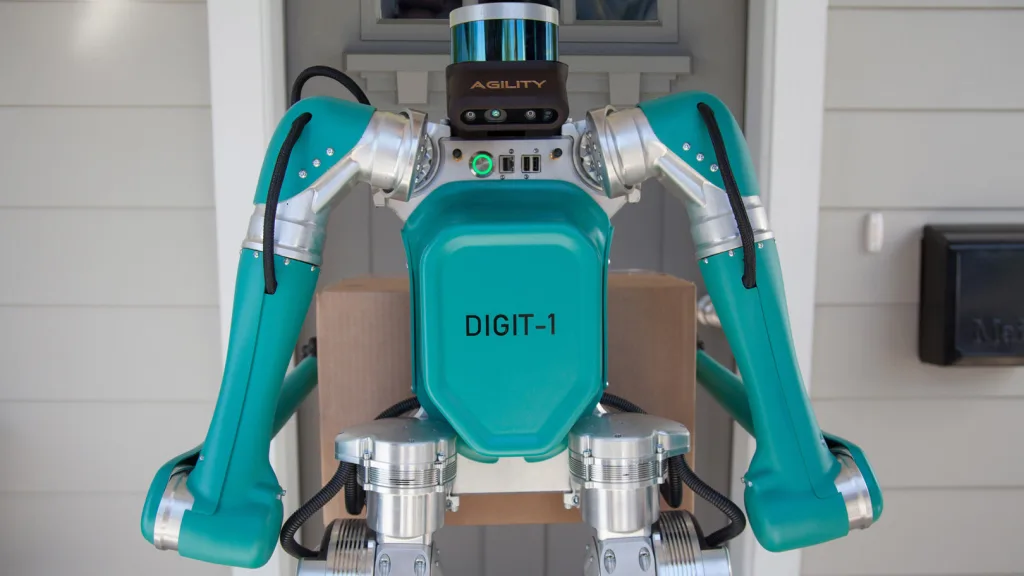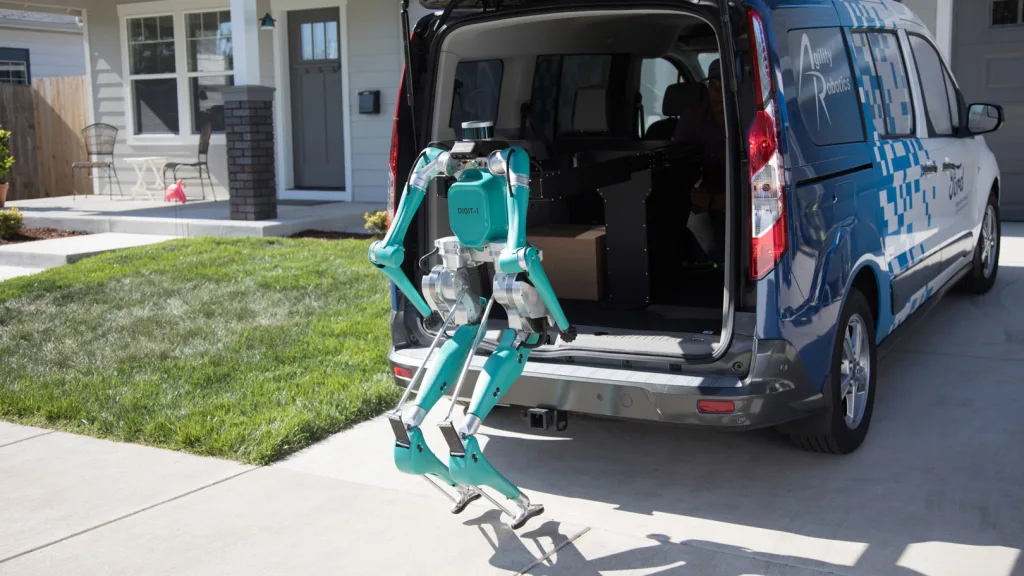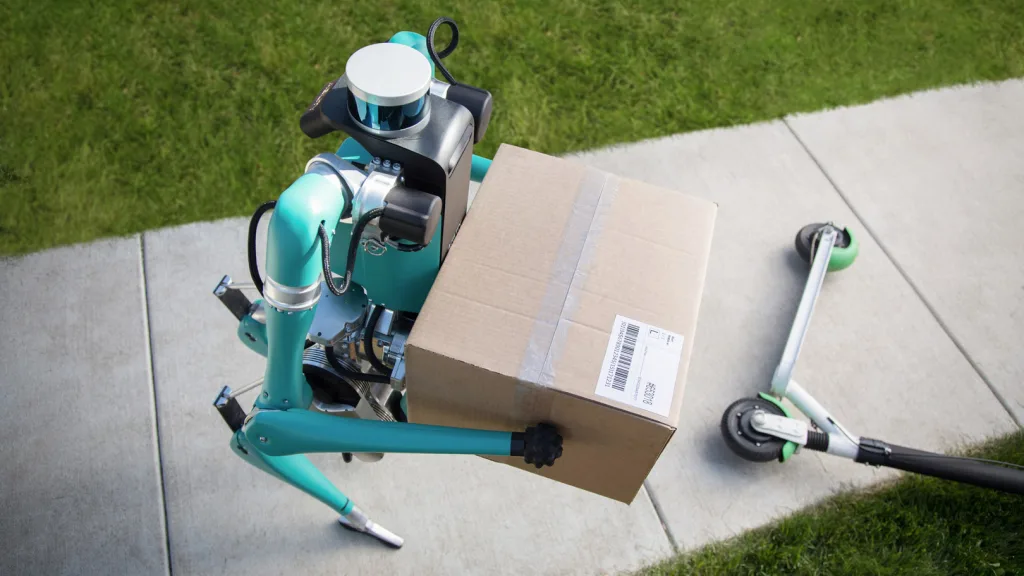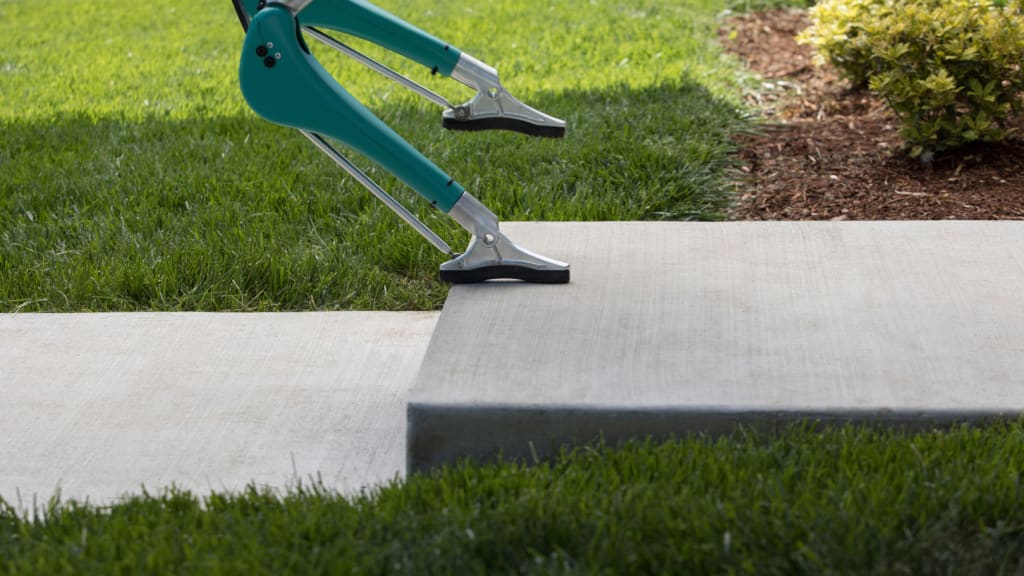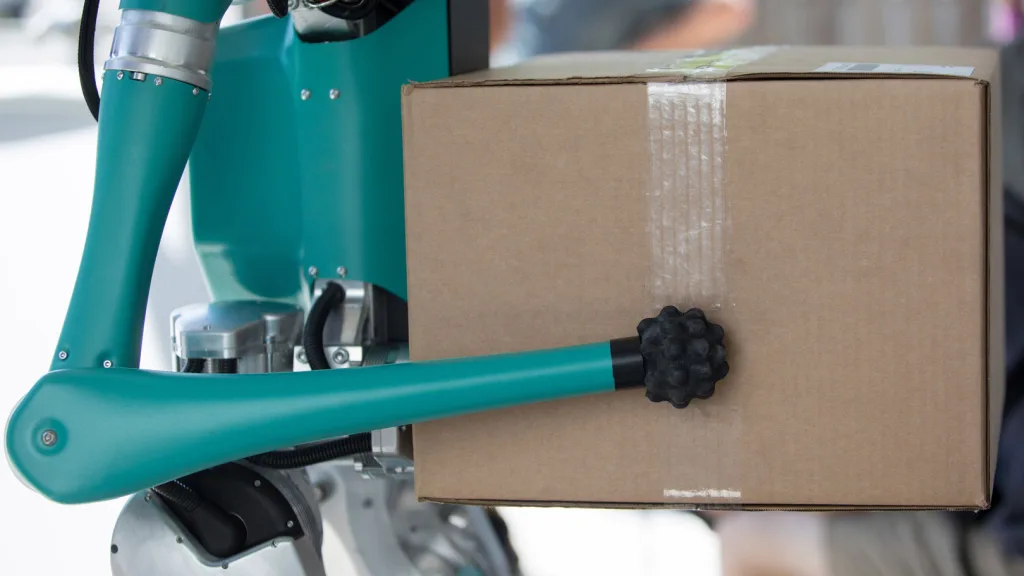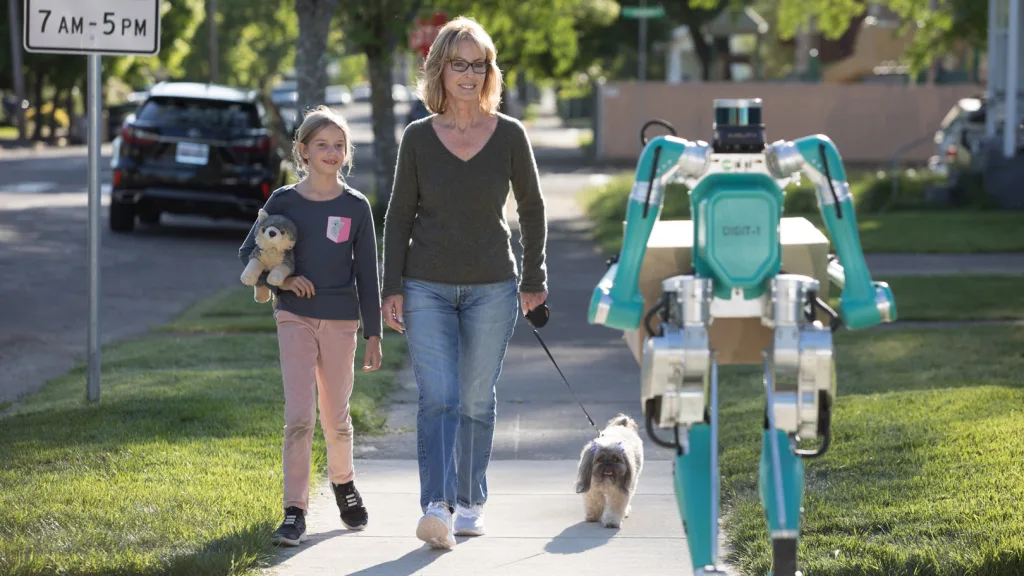The internet loves freaking out about bipedal androids, so by now you’ve probably seen Ford’s video showing a mantis-like robot that can unfold itself from the back of a delivery van and walk a package up onto a suburbanite’s porch. Ford is billing the bot–named “Digit” and created by Oregon-based Agility Robotics–as an ingenious solution to the so-called “last yard” problem in automated package delivery.
In short: A self-driving van can get your Amazon crap from the fulfillment center to your address, but what about covering the ground from the curb to your door? That’s when a pair of legs and hands comes in handy.
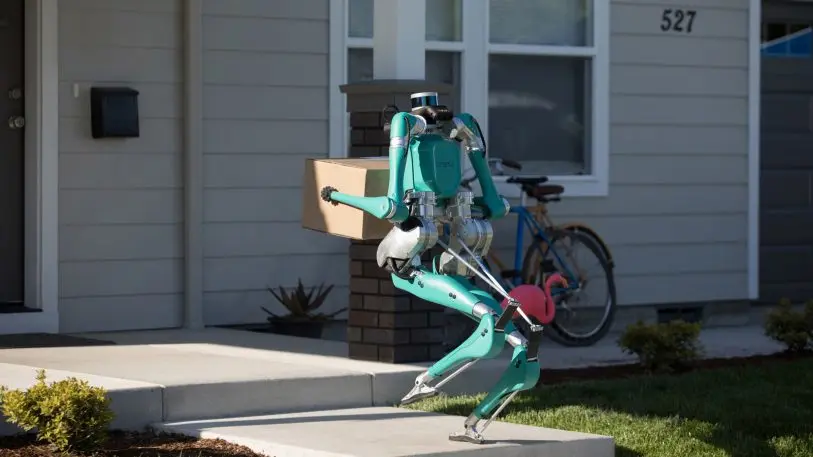
Still, there is the creep factor. Ford’s video spends considerable effort making Digit seem harmless and normal. (Did you see how the woman and her daughter totally didn’t seem bothered by it? Me too!) But let’s get real: When emerging from the back of its van, Digit looks less like your friendly neighborhood delivery person than a headless mechatronic wasp hatching from an egg.
https://www.youtube.com/watch?v=WHWciIxNK2c
Then again, drones looked off-puttingly insectile at first, too, until everyone got more used to seeing them. There might even be a paradoxical logic to having Digit look like the unholy lovechild of an ostrich and a praying mantis. Bipedal robot technology is in an awkward stage between functional in principle and actually useful, and the only way to bridge that gap is by iterating in the real world. Like an early-stage self-driving car, Digit moves cautiously, and its “workflow” still appears relatively fragile. If the robot were designed to look more “finished,” people might overestimate its capabilities and interact with it in ways that would result in a lot of embarrassing failures. Instead, Digit looks like something experimental that you wouldn’t want to interfere with–which could be helpful in an early pilot phase.
In fact, having delivery androids appear ever-so-slightly intimidating might end up being a purposeful feature, not a bug. People, after all, love to abuse robots–so what’s to stop some smartass from grabbing the package right out of Digit’s hands and making off with it? I don’t know about you, but I’d think twice about messing with a headless mechatronic wasp that’s just trying to do its job.
Recognize your brand’s excellence by applying to this year’s Brands That Matter Awards before the early-rate deadline, May 3.
